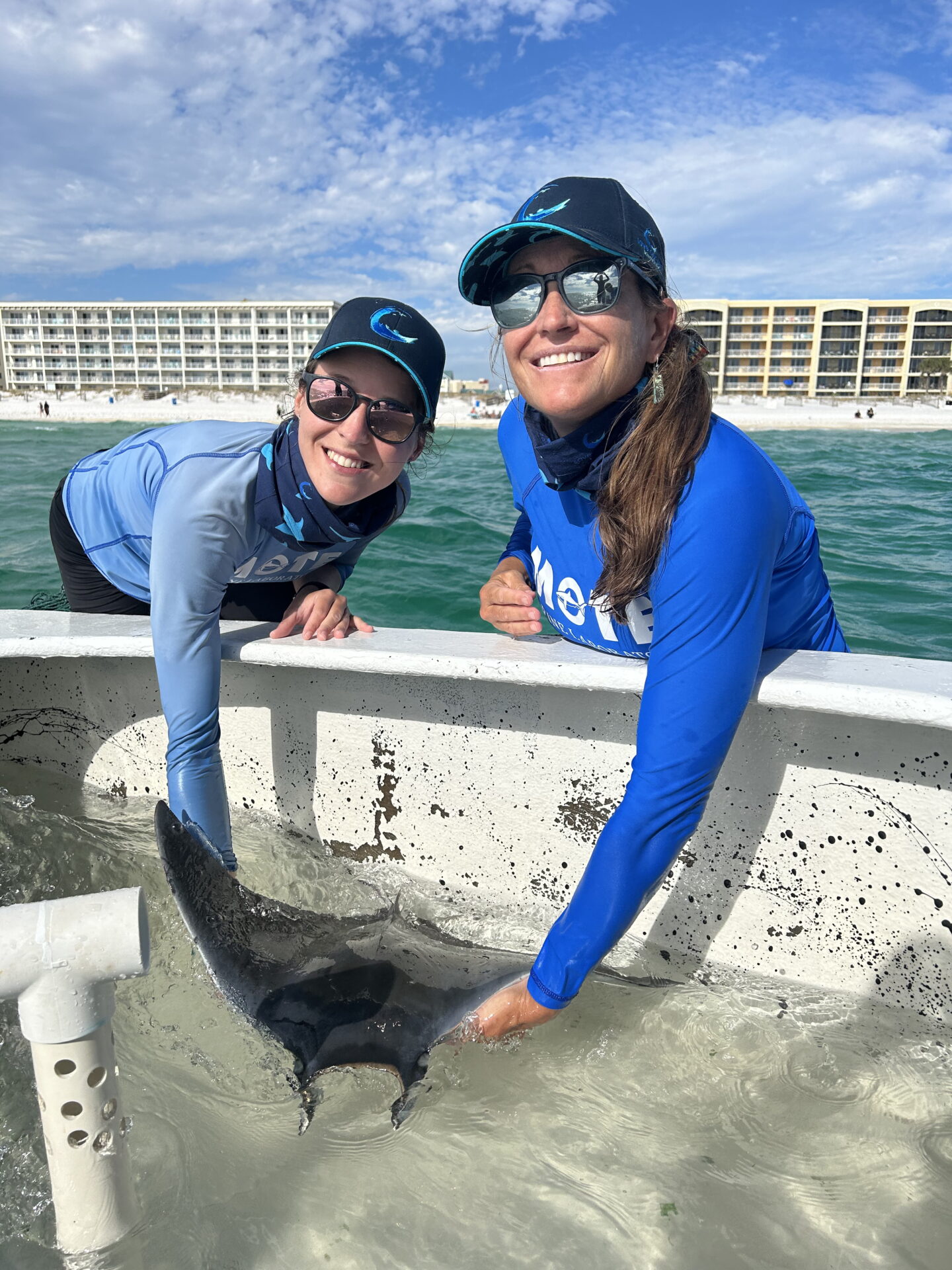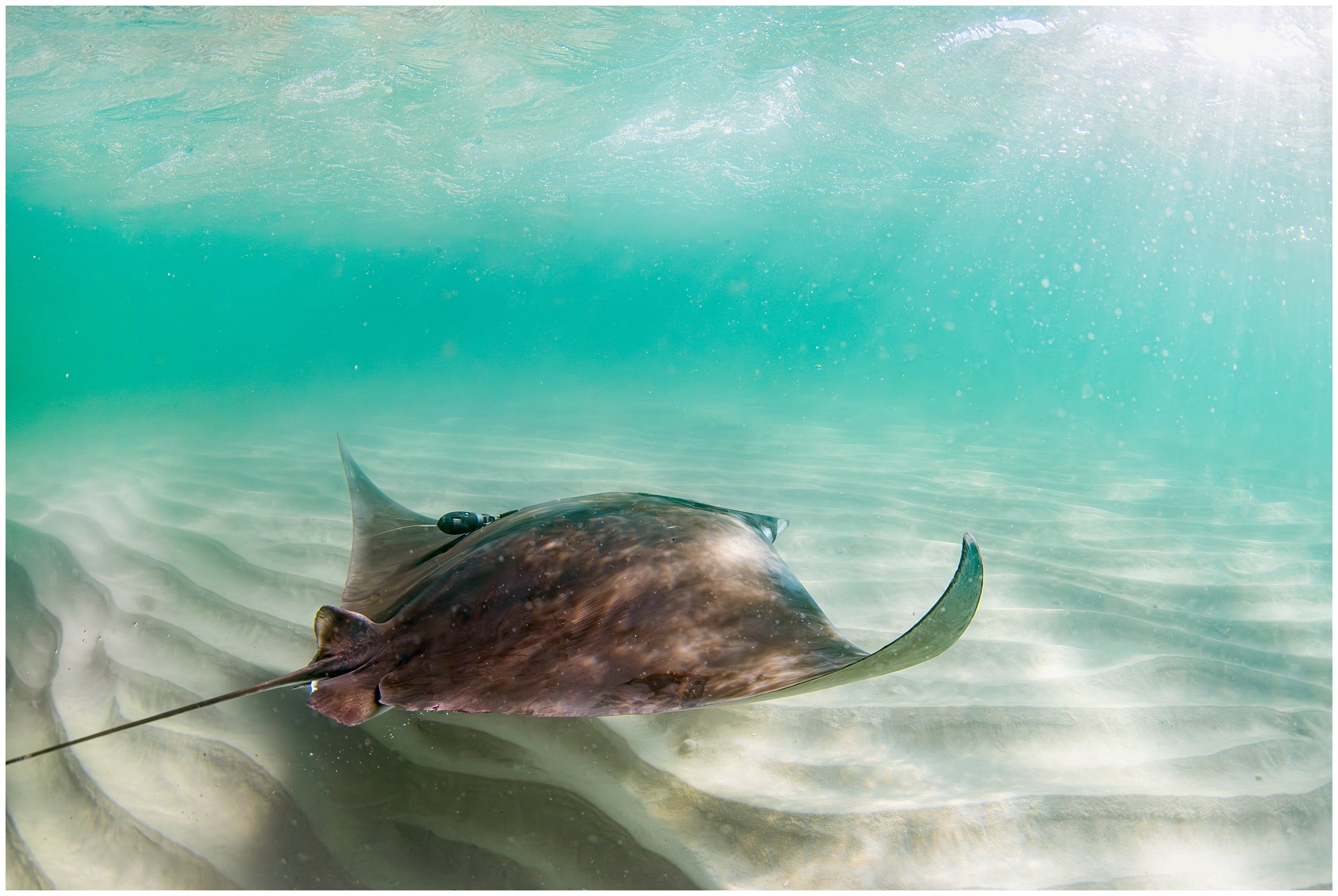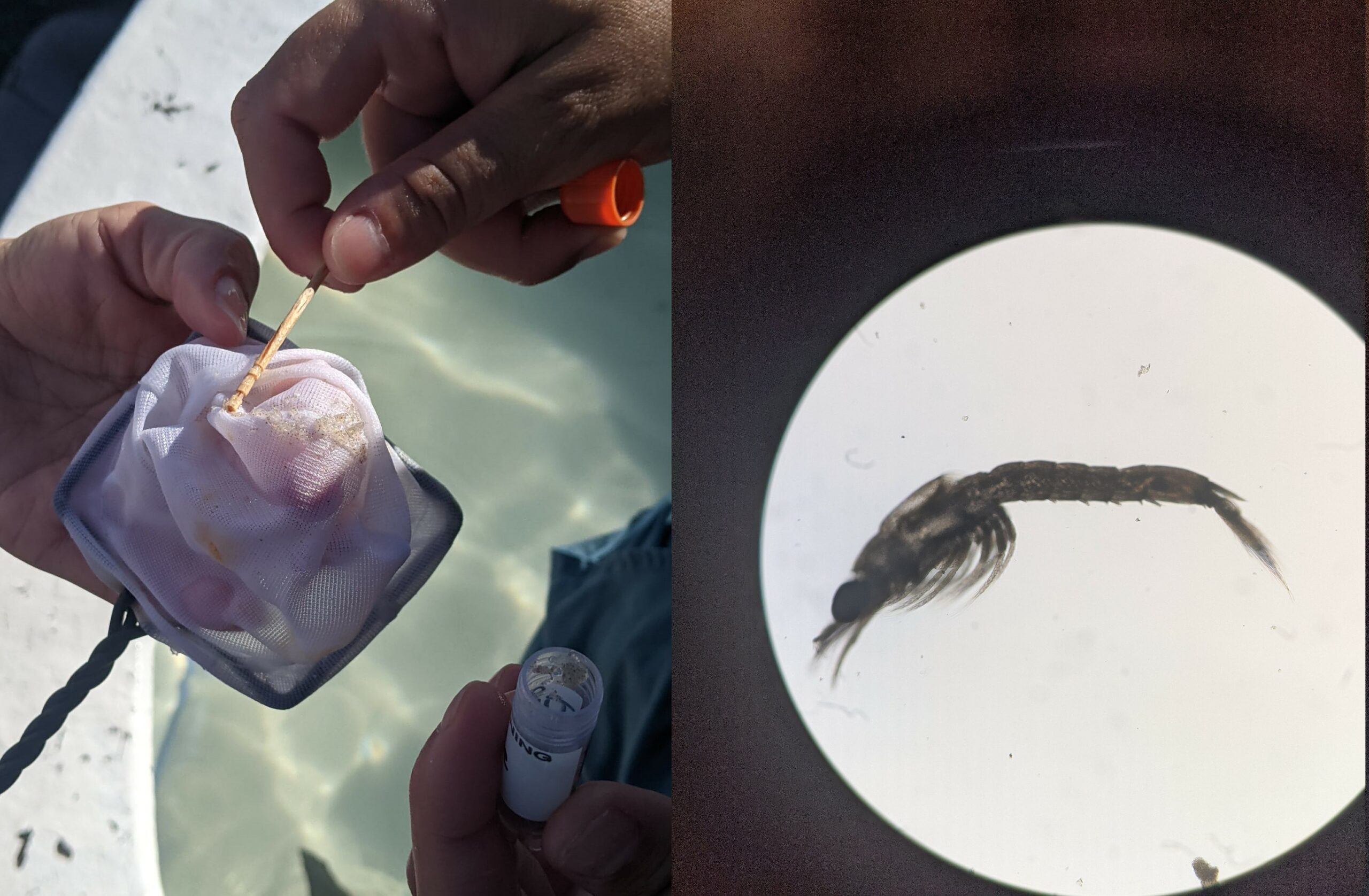Devil rays for days, calm seas and shrimp frenzy: recipe for a successful fieldwork
Understanding drivers of movement of threatened species is crucial for setting up conservation measures to protect them. For Mobula hypostoma, the Atlantic pygmy devil ray, these questions are still unanswered – but hopefully not for long!
Acoustic tags opportunistically deployed between 2019 and 2022 (prior to the official start of this SOSF research project) have given us a glimpse into devil ray movements in the Gulf of Mexico. Out of seven subadult/adult devil rays tagged off Sarasota, Florida, five migrated 500-600 kilometers to the northern Gulf of Mexico (Florida Panhandle /New Orleans) in the fall or early winter. Two individuals returned to Sarasota the following summer, and one even made an additional movement back to the FL Panhandle in the fall. Our main goals for this 2023 fieldwork in the Panhandle were thus to: a) deploy more acoustic tags to confirm this migration pattern for both sexes and across life stages (juveniles/subadults/adults); b) identify possible drivers of their migrations.In our previous blog post about our first fieldwork session in November 2022, we reported low numbers of devil rays. What a difference a year makes! From as early as September 2023, juvenile pygmy devil rays were consistently reported by the public in social media posts all along the Panhandle coast. When we arrived in early November, it was a ray party! In four and a half days, we PIT-tagged and sampled a record number of 47 individuals, and deployed all (n = 30) of our acoustic tags.
It truly was the ideal fieldwork scenario:
- target species abundantly present? Check!
- in shallow, calm waters allowing capture? Check!
- pleasant weather not requiring eight different layers and ski pants on the boat? Check!

Project leaders Atlantine Boggio-Pasqua and Kim Bassos-Hull about to release the last tagged devil ray of the season. Photo by Anna Knochel | © Mote Marine Laboratory
This fieldwork was also memorable because we deployed the very first satellite tags on the species! A large adult female and a subadult male were both equipped with a Wildlife Computers pop-up archival tag (microPAT) which records depth, sea temperature and light (used to estimate position) and transmits that data via satellites after detachment.

This large adult female effortlessly swims away as the pop-up satellite tag on her back starts recording depth, light and temperature. Photo by Sean Thomas | © Sean Thomas Photography
Last but not least, we discovered what we think could be a major piece of the puzzle of devil ray movements in the Gulf of Mexico. As we were catching juveniles group feeding in the shallow waters right by the beach, Pete (one of our amazing captains and ray catchers) noticed thousands of tiny creatures in the water where the rays were swimming and feeding. He brought a bucket of seawater back onboard and, as we looked closely at them, we suddenly exclaimed: “These are shrimp!”. We collected some and after a first quick examination under the microscope, they seem to be mysid shrimp, which are likely prey for devil rays. Is this why juveniles and subadults come back to the Panhandle every year? Further investigation is needed to confirm it, and we intend to follow that lead thoroughly. In addition to muscle and blood samples collected for stable isotope analysis, this year we started collecting faecal DNA which will hopefully help us unveil devil rays’ favorite meals.

Mysid shrimp collected in shallow coastal waters, where juvenile and subadult devil rays were actively filter-feeding. Photos by Atlantine Boggio-Pasqua | © Mote Marine Laboratory
Stay tuned for updates on the tagged devil rays and our progress in analyzing all the precious samples we collected this year!
